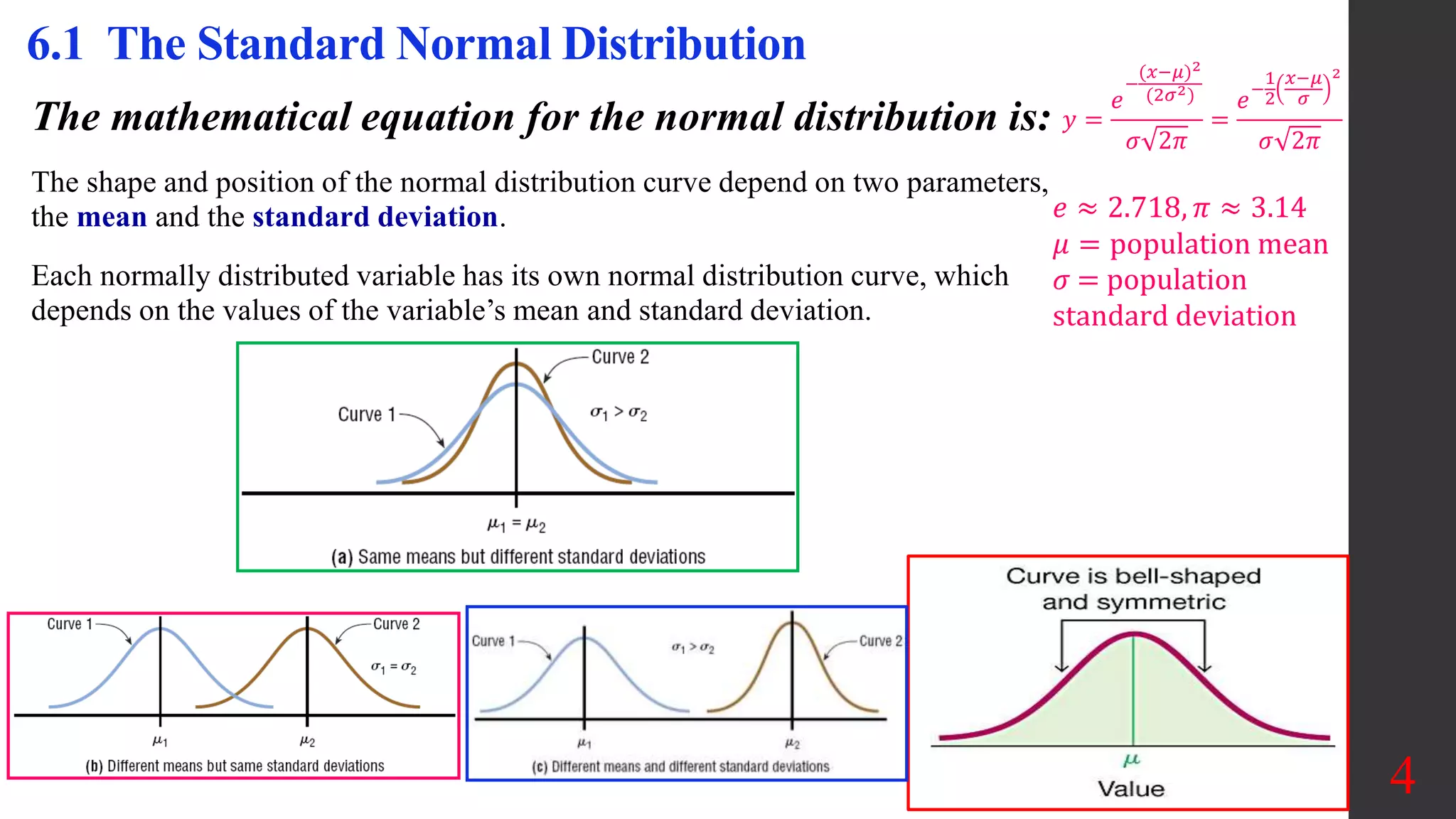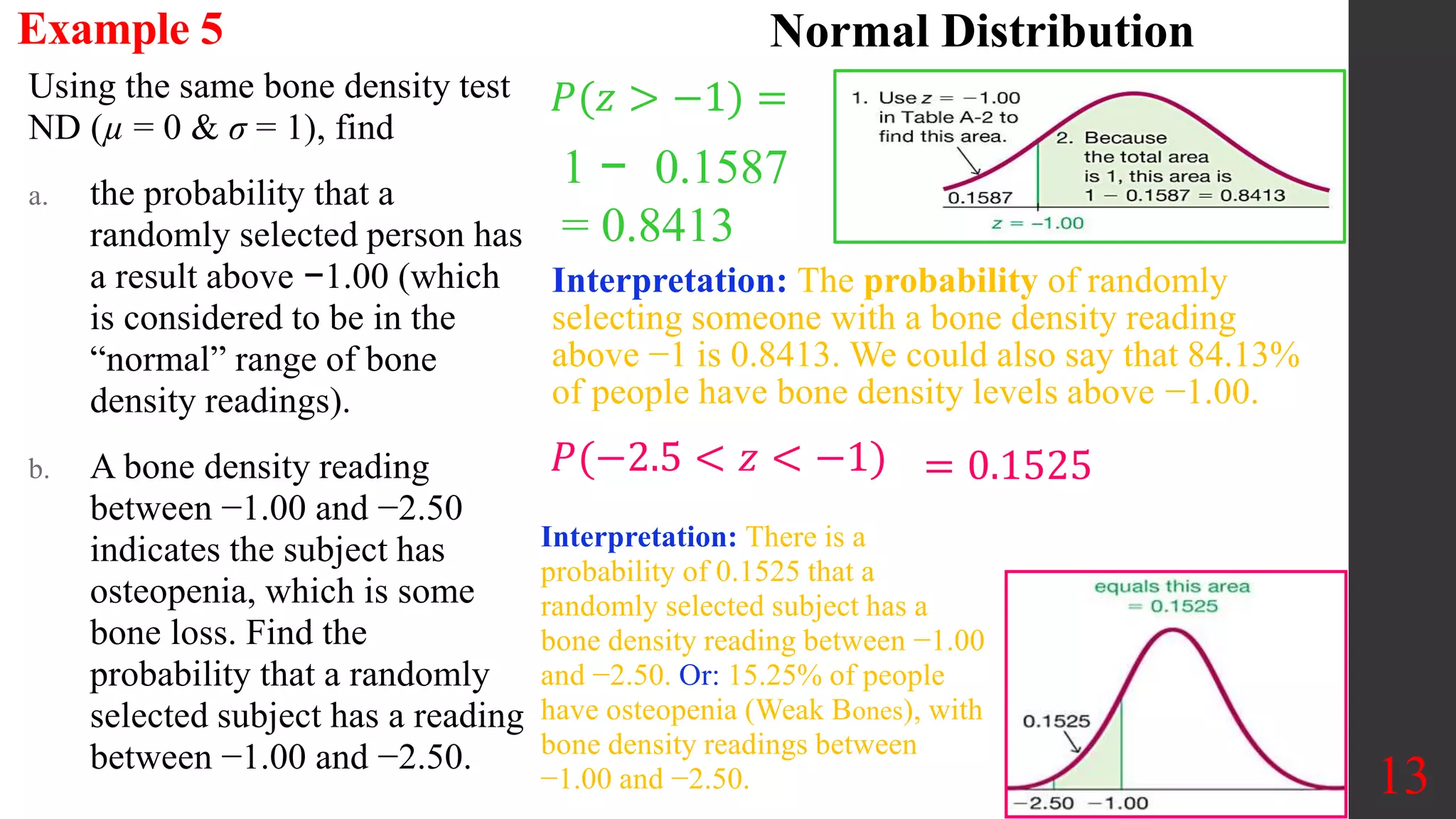Chapter 6 covers the normal probability distribution, focusing on the standard normal distribution, its properties, and practical applications. It discusses identifying normal distributions, calculating areas under the curve, using the central limit theorem, and applying normal approximation to binomial variables. The chapter emphasizes the relationship between z-scores and areas, and provides tools for finding probabilities related to normally distributed data.















